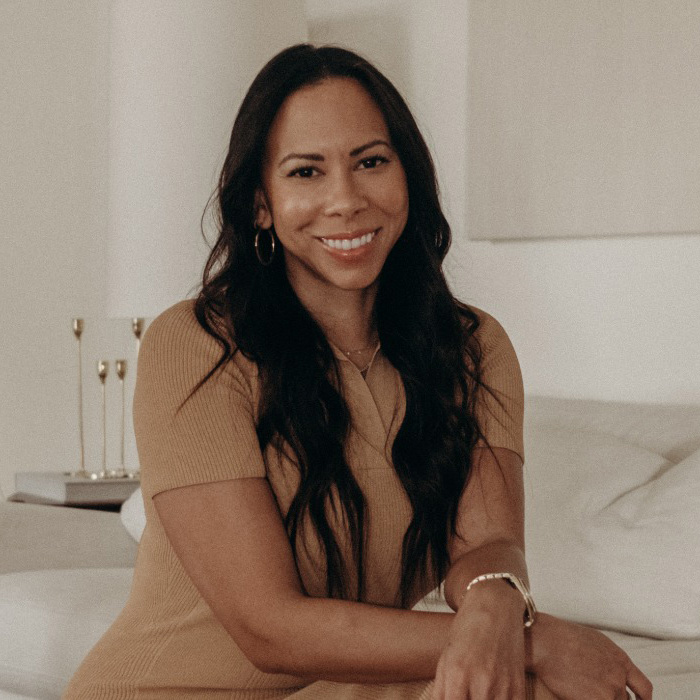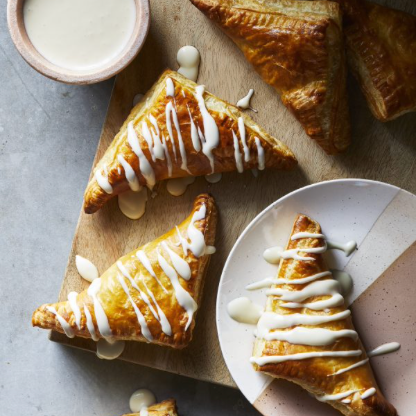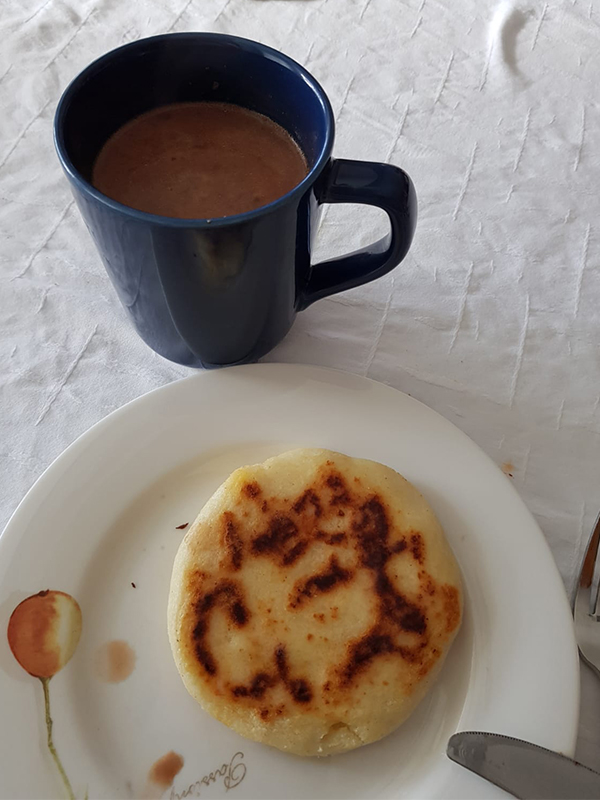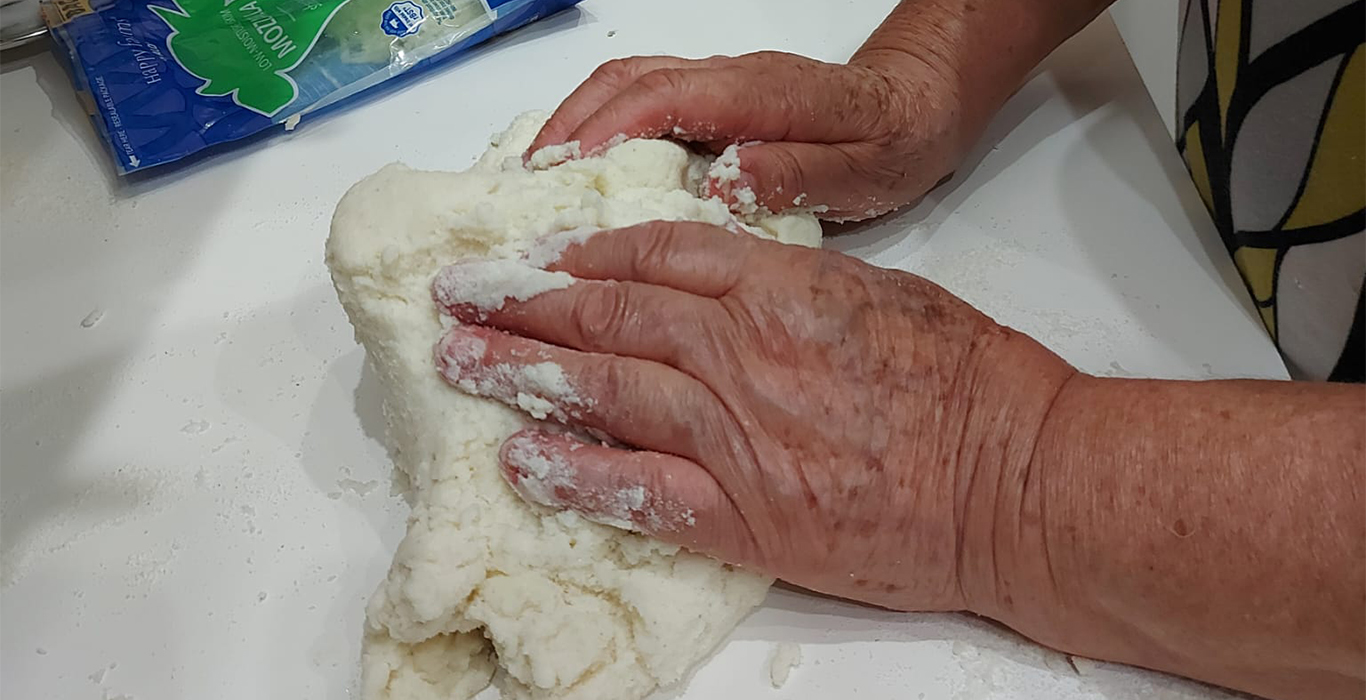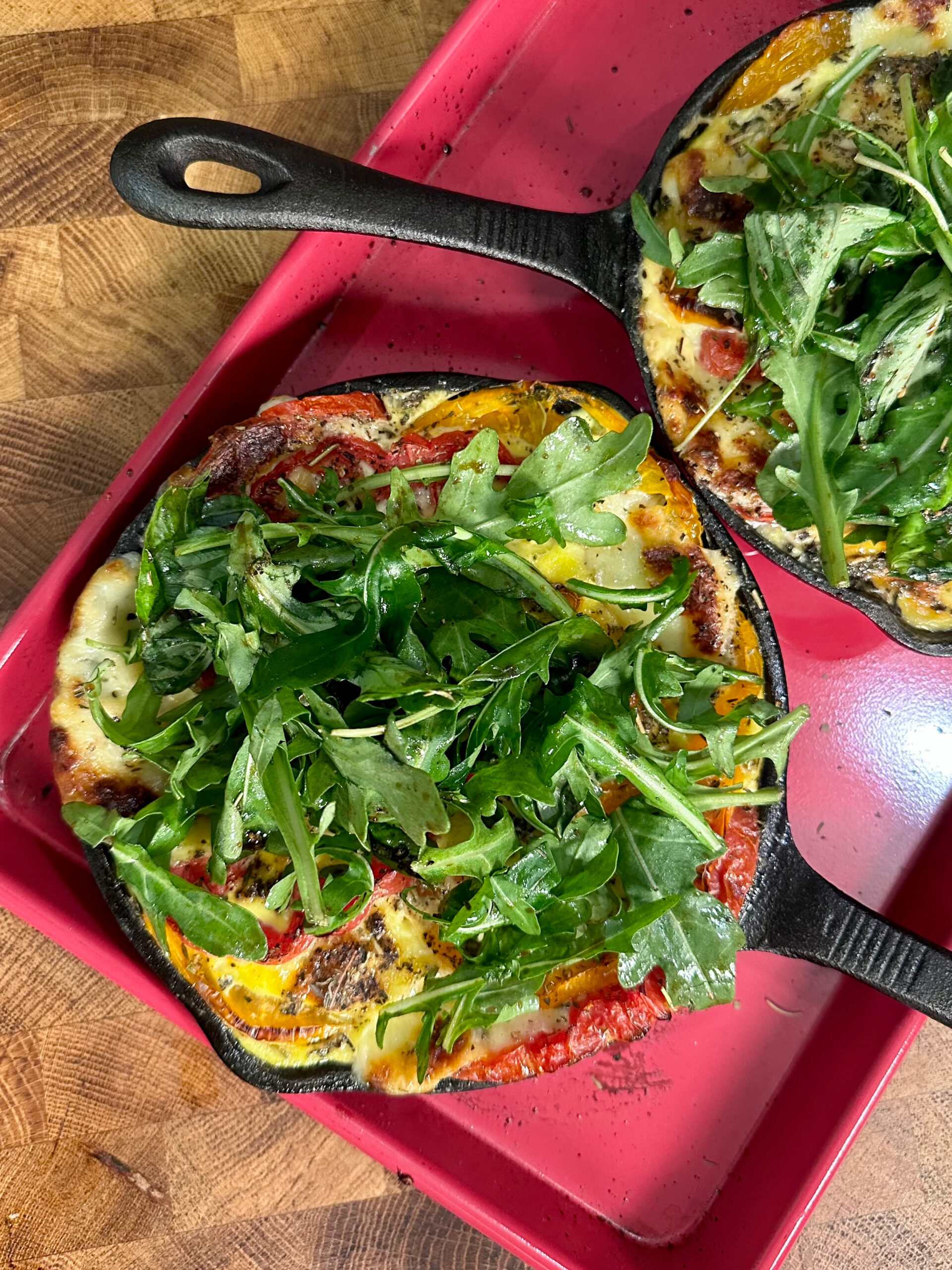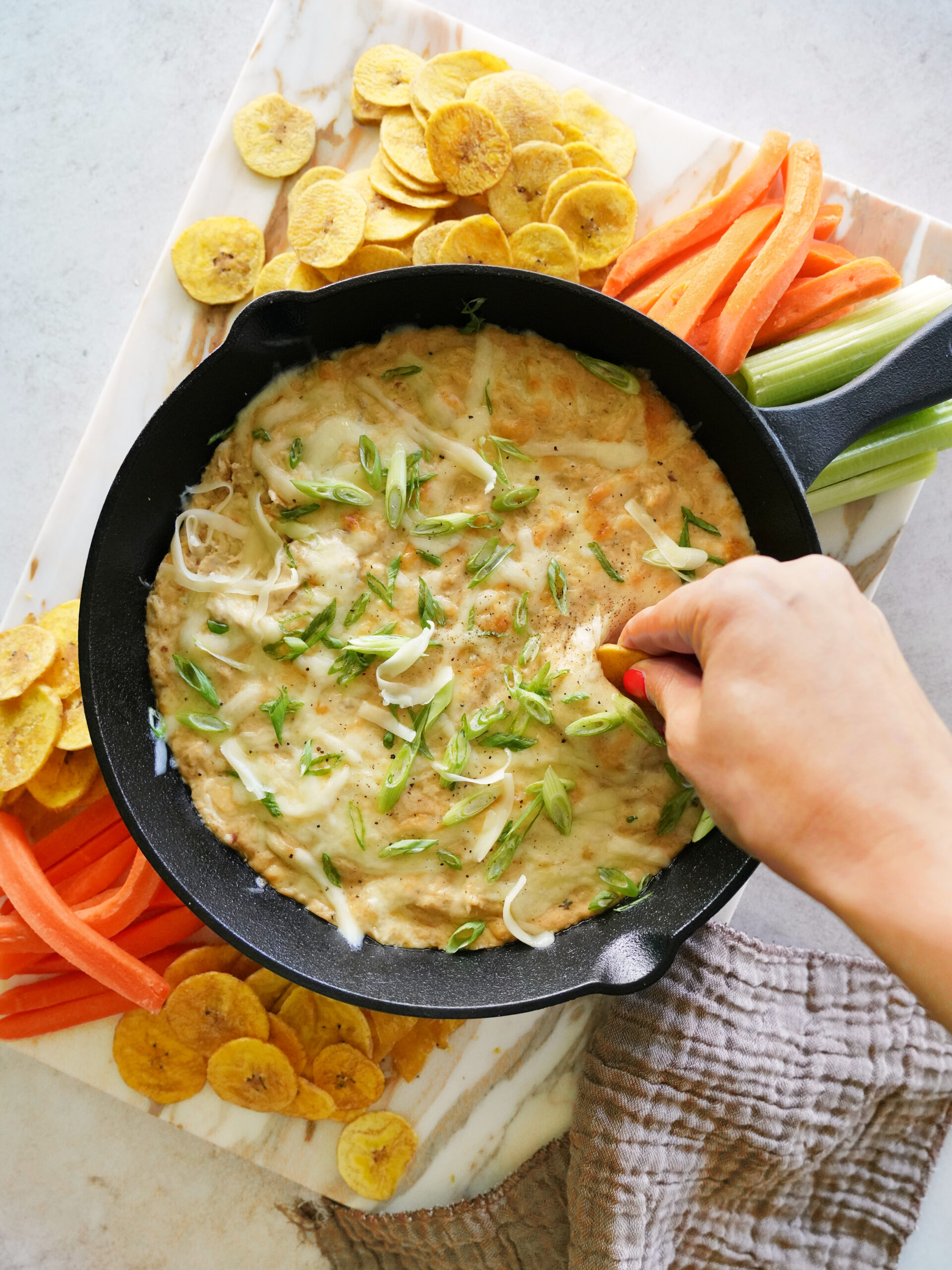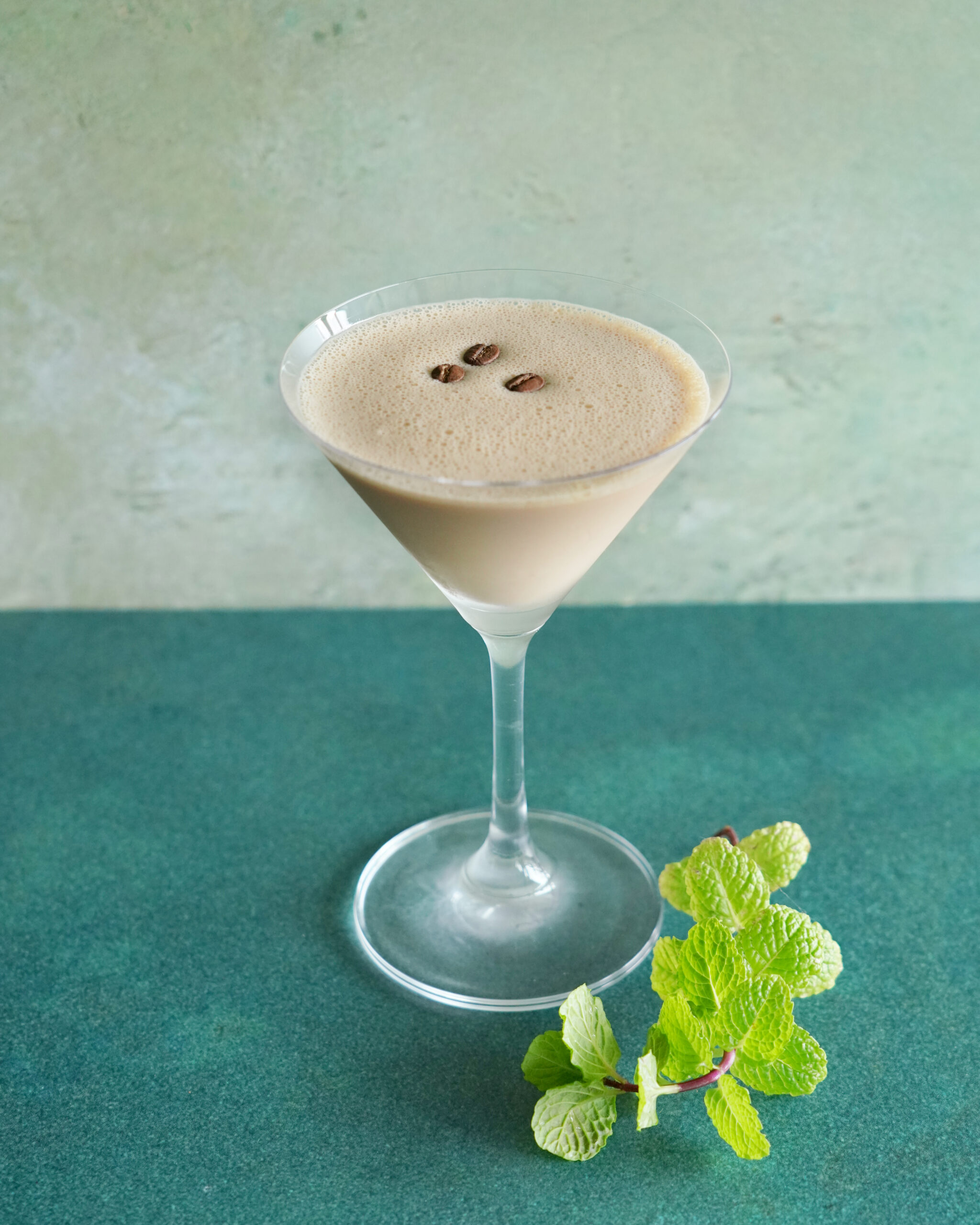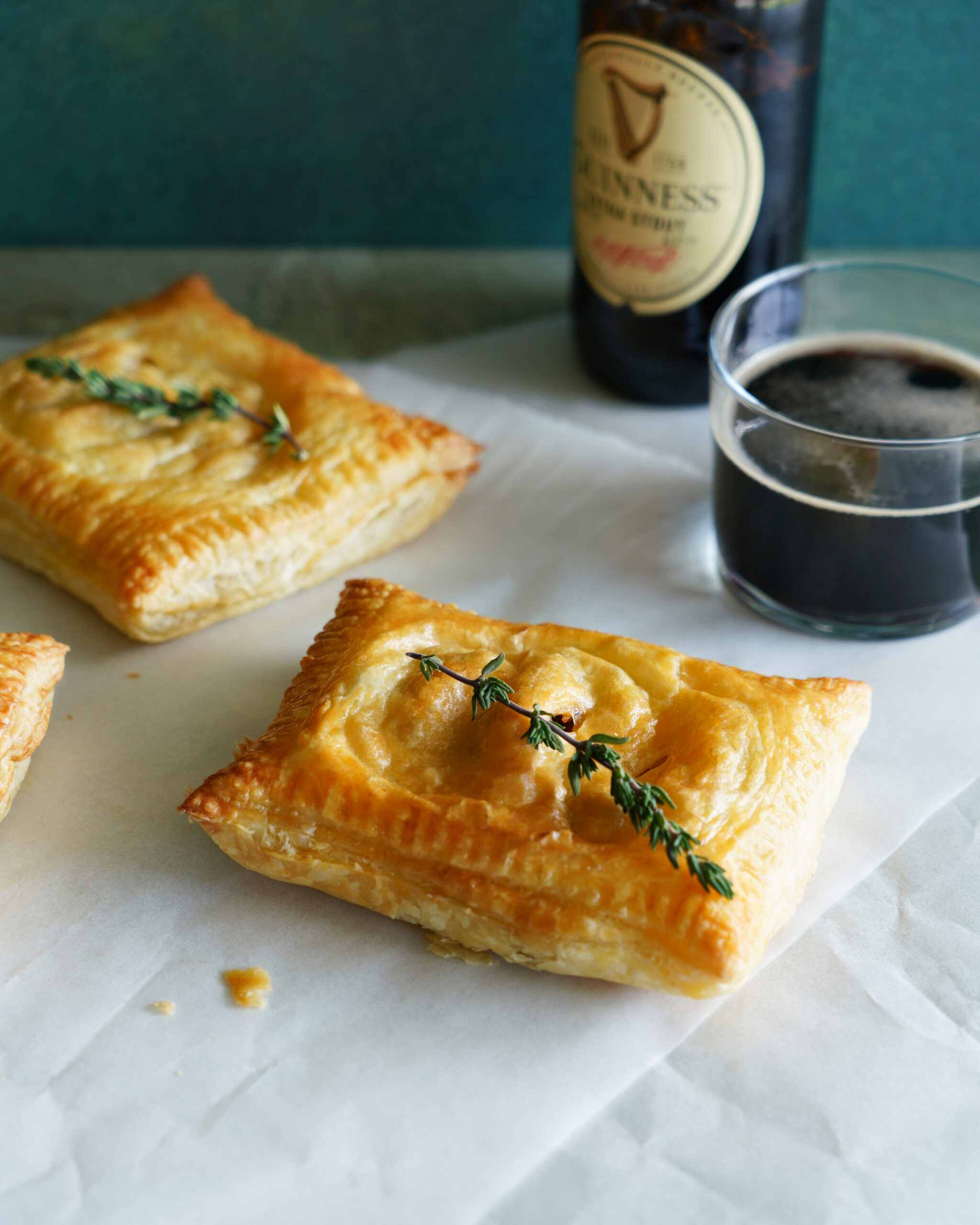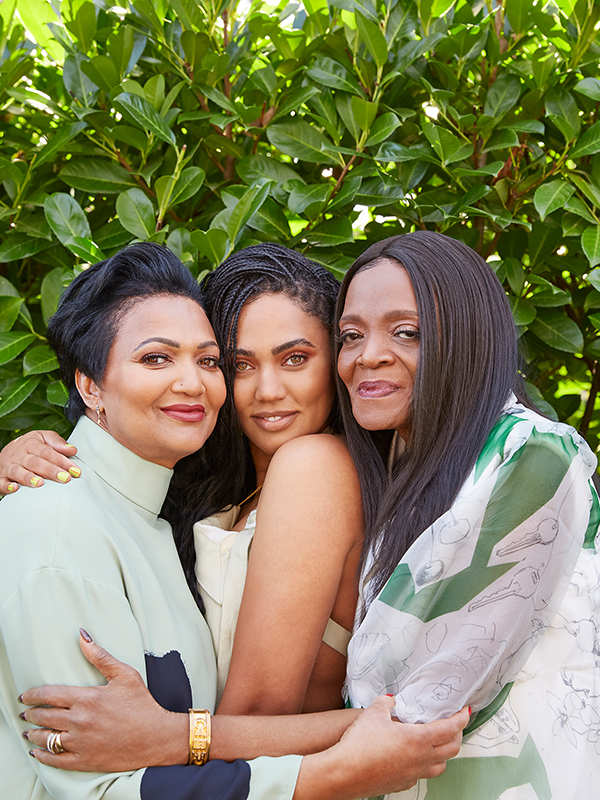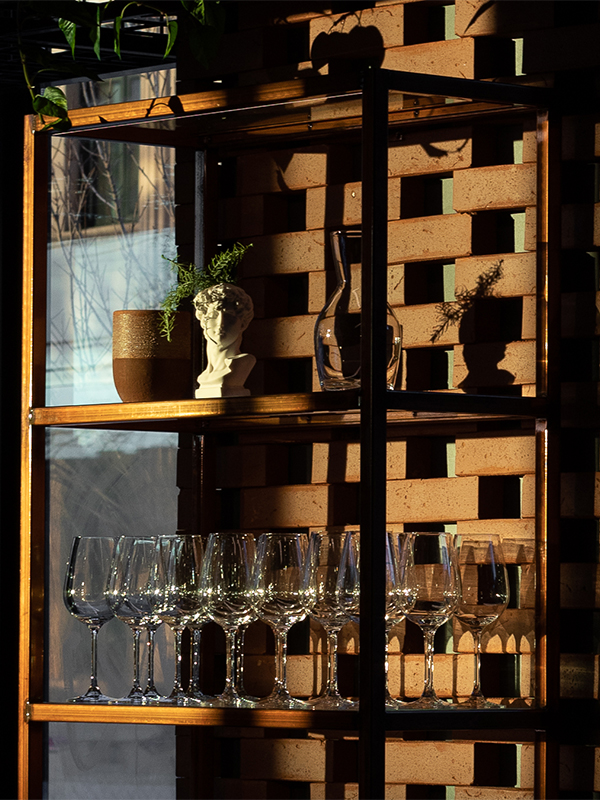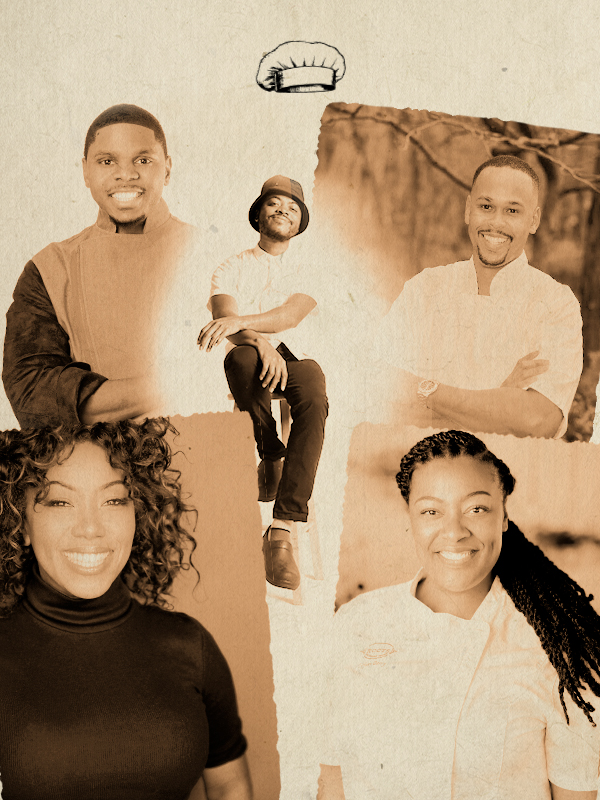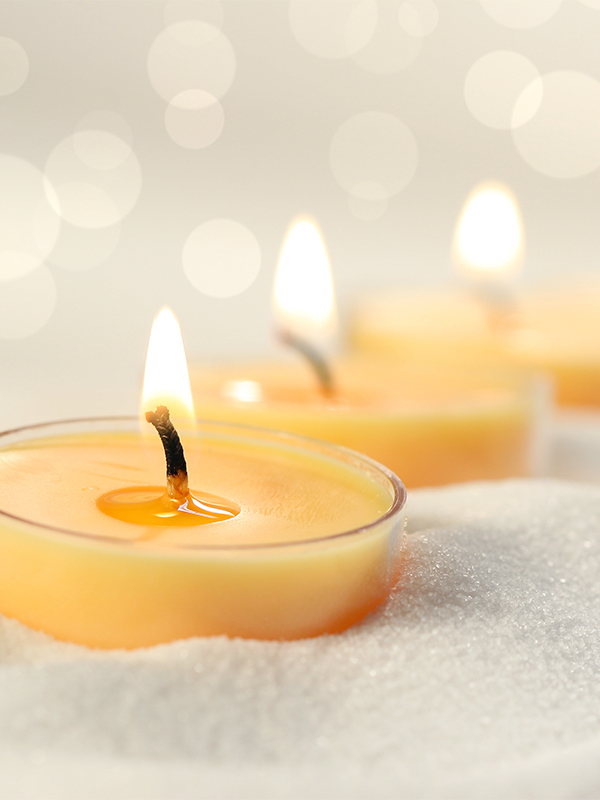My abuela insisted on teaching me how to make arepas from an early age. I only saw her once a year, so I had a limited window to learn how to make them. Every summer, I would stand on a chair to reach the counter, and watch my abuela measure two cups of Harina P.A.N. flour, two cups of water and a teaspoon of salt into a big bowl. Without hesitation, she mixed all the ingredients with her hands, with the dexterity of someone who has been doing this for decades.
Among years of the same ritual, one specific memory comes to mind: While abuela leaves the dough resting for five minutes, I pinch a bit of the dough and pop it in my mouth. It’s salty, textured and delicious. Abuela waves me away from the bowl and tells me not to eat it raw.
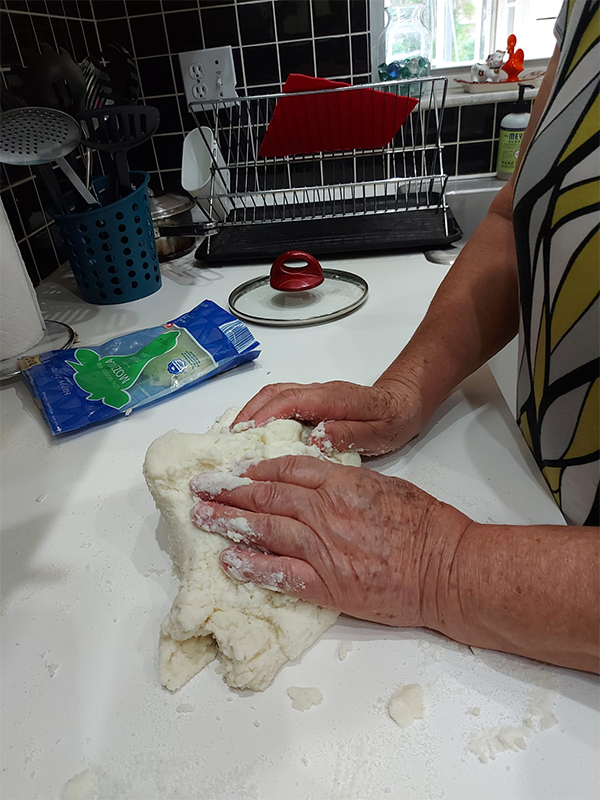

While we wait for the dough to rest, abuela grates some cheese, usually mozzarella but traditionally, we’d use queso campesino. We can’t always find that kind of cheese in South Florida, so mozzarella it is. Once the dough is ready for handling, abuela shows me how to shape it into a ball big enough to poke a hole in the middle to fill with a handful of grated cheese. After it’s filled, she flattens the ball into a disk with her hand, drops it in a hot pan with sizzling butter, and instructs me to start shaping more arepas in the same way she did.
After shaping a dozen of them, we watch them become golden crispy in the frying pan. When we bite into them later, sitting at the kitchen table with hot drinks, the hot cheese spills out just the right amount. Abuela eats her arepa with a cup of coffee, while I eat mine with hot chocolate.
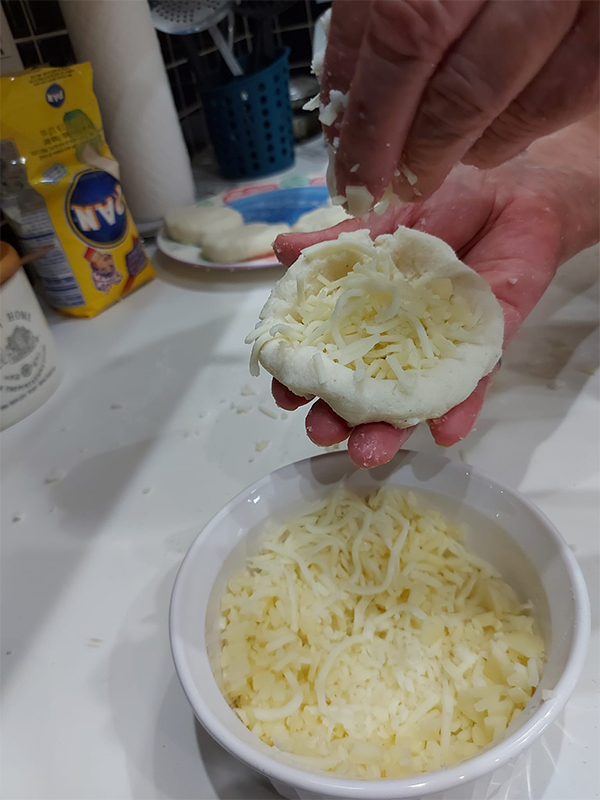
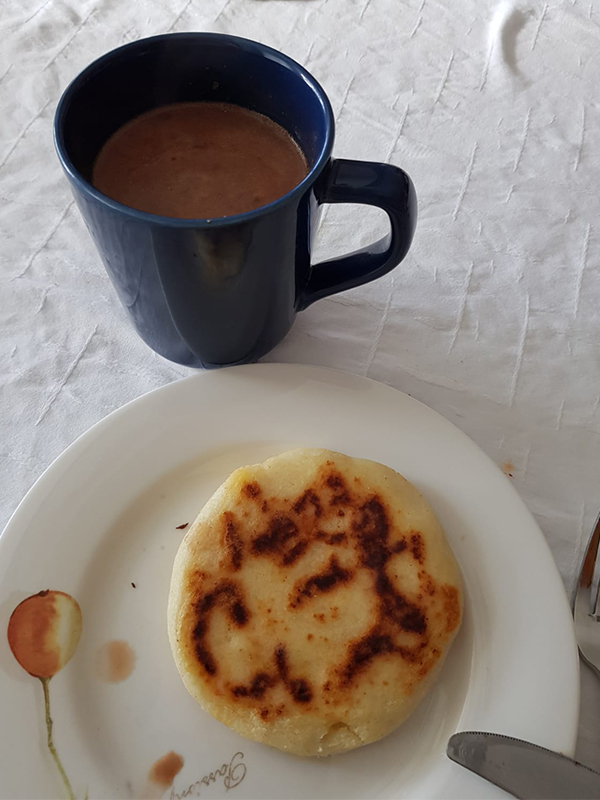
Communicating with my abuela has always been difficult for me. I speak Spanish, but I am shy about the mistakes I make when I try to jump back into the rhythm of the language. In the absence of a complex vocabulary between us, my abuela has always loved me through the food she makes me every time I come to visit. “Qué quieres comer?” she asks me when I arrive from Miami International Airport, and then she spends the rest of the month feeding me.
When I first met my wife, I discovered my attachment style is anxious-avoidant through journaling and a journey of self-discovery. I never understood why my feelings for people seemed to simply disappear once we got serious, but the emotional pattern was clear: after dating a person for a while, I started feeling bored, which quickly manifested into avoidance and anxiety. But with my wife—even then in the early days—I knew I wanted us to work, and so I had to do things differently. So, I obsessively read about my attachment style online, seeking to fix myself.
The best trick I found to get my nervous system to relax from the fight or flight impulse was planning dates with activities. For anxious-avoidant people, taking on a responsibility or task helps tame anxiety. So instead of sitting in a restaurant or watching a movie—setups that leave too much space for the mind to wander into doubt—we would cook together early on in our relationship—and still do.
I can still hear the cutting wind outside as we made arepas y plátanos during the first month of our relationship. I had suggested we make Colombian food because I was homesick. It was much colder in the U.K.—where we both lived at the time—than it ever was in South Florida, but it still felt like a play-by-play flashback to that day my abuela taught me how to make arepas. This time, I was the teacher. The muscle memory of my hands around the dough impressed my wife-then-girlfriend, and it soothed my anxieties. I felt safe, loved and warm.
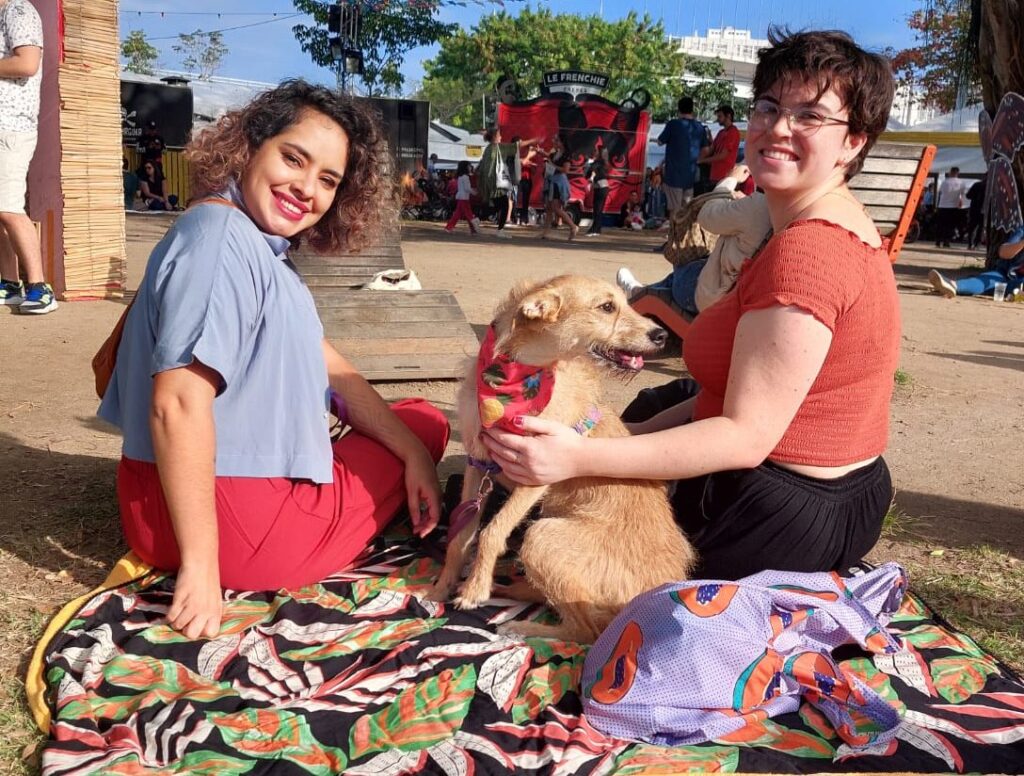
We ate the arepas and platanitos with Colombian hot chocolate, wrapped in blankets on my couch. It was cold outside, and the future was scary. But I felt no desire to run.
When I finally came out as bisexual to my abuela and introduced my wife-then-girlfriend, she welcomed her into the family with a tight hug and kind words. As always, she asked us what we wanted to eat, planning the upcoming meals around my desires like she always did.
Asking for Colombian food—and making it—has always been easier than perfecting my Spanish. It’s less embarrassing than requesting my abuela repeat what she said, but slower. Food is a language we both have always understood, an undeniable exchange of love.
In the home we built after moving in together, arepas y plátanos became a comfort meal for my wife and me. It reminds us of when we fell in love, and it brings us back to our relationship when life gets too hectic. It also reminds me of my abuela—how she taught me that love and care can be as simple as a homemade meal.



